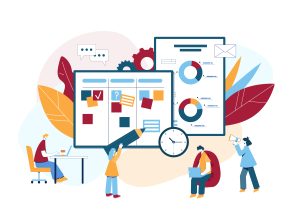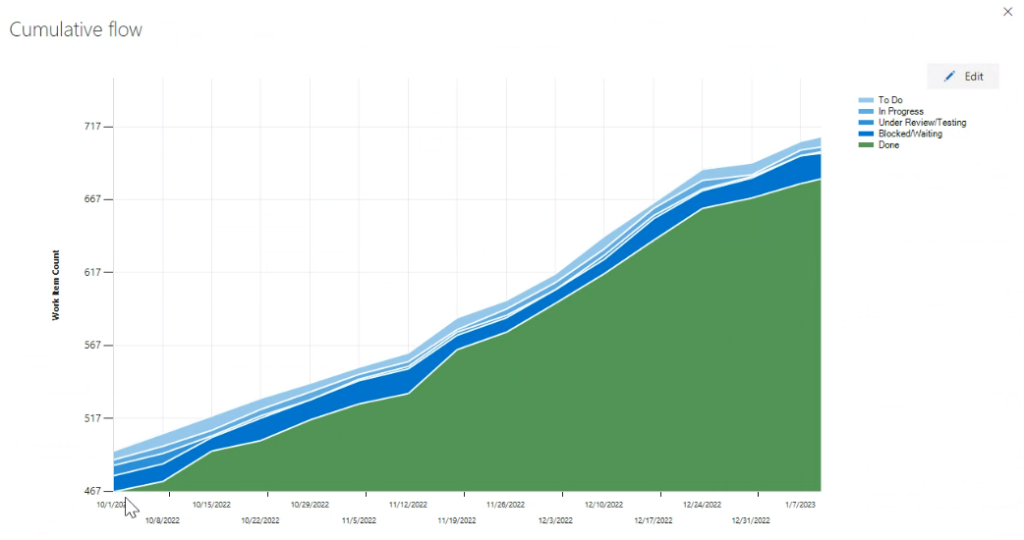 By Tige Nishimoto, TCG Agile Capability Lead
By Tige Nishimoto, TCG Agile Capability Lead
As Agile practitioners know, one of the more popular lean-workflow management methods is Kanban. Kanban helps visualize work, maximize efficiency, and improve continuously. Work is represented on Kanban boards, allowing users to optimize work delivery across multiple teams and handle even the most complex projects in a single environment.
TCG has helped Federal clients utilize Kanban methods for digital services support teams, overseeing enterprise operations and sustainment programs. At one client agency, our team provides support to nearly 136 systems and applications (which, notably, were all built by TCG teams). Here are some best practices that our TCG teams use to ensure Kanban processes run smoothly, bringing added transparency, process continuity, and cost savings to our client services:
1. Swim together
Kanban methodologies traditionally use “swim lanes,” or horizontal lanes to separate and further define workstreams, for example, by different support teams or application systems. This can be effective for visually organizing work, but can lead to resource inefficiencies — as team members tend to “stay in their lane”, reducing the opportunity for shared team efforts. Removing swim lanes from your Kanban board can help promote team ownership of tasks as they move through workflows. In a traditional Kanban board, individual team members are responsible for their tickets and are limited to the duties in their assigned role. However, this quickly becomes problematic when it comes to tickets that contain multiple tasks and stages that require skills across the entire team. Removing individual ownership of tickets and swim lanes enables team members to work on the same ticket maximizing their strengths and sharing the workload.
2. Keep it simple
Carefully consider the workflow process and how each task moves through phases. Resist the urge to create a workflow column for too many phases. To do, in progress, and done is sometimes all you need. Taking a minimalist approach to workflow, while avoiding the temptation to capture every workflow contingency is a positive way to keep the trains moving without distraction or additional management overhead. In this case, manage to the norm, not the exception. Lastly, make sure your team knows when tickets are ready to move on to the next phase and establish efficient hand-offs.
3. Ownership at every level
As a visual method for managing work, Kanban should be used to emphasize ownership and responsibility at every level of the program. Everyone–teams, product owners, end users–benefit when the PO is involved in the Kanban process. The PO ensures that customer needs and expectations are incorporated into the product, and also works with the team to refine the backlog during monthly retrospectives. By actively engaging with the PO, the team can be focused on delivering high value. In addition, every team member should feel empowered to escalate. This helps to build a culture of accountability and ownership within the team, which in turn drives efficiency and effectiveness. By making it clear who is responsible for each task, teams can work together more effectively to get the work done and continuously improve the process.
4. Establish and keep the WIP limit
When utilizing the Kanban method, it is always a good idea to set a Work in Progress (WIP) limit as it helps keep the work flowing smoothly and prevents the team from getting overwhelmed. Think of it like a traffic light. If you have too many cars on the road, traffic gets backed up and slows down. The same thing can happen with work. If you have too many tasks in progress at the same time, it can slow down the entire process and cause delays. Determine beforehand how much work your team can efficiently accomplish and add that limit to each column. Setting a limit to your Work in Progress, allows team members to focus on finishing the most urgent tasks first and move projects from start to finish more quickly. It also prevents them from getting overwhelmed as new work comes in, because once a WIP limit is reached, no new tasks are allowed into that phase until the outstanding tasks are completed.
Bonus: Use a Dashboard for Cumulative Workflow
If a certain phase of your workflow consistently reaches its limit, that will stand out visually that there may be a bottleneck in that phase.

Note: where the under review was minimal, but the blocked/waiting expanded. It was a slower process for tickets to reach ‘done’ during this period before an uptick when the blocked/waiting items also lessened.
Kanban is a powerful tool for managing work and elevating client services. By visualization and workflow tools, Kanban helps to optimize delivery across teams and handle complex projects. TCG has successfully implemented Kanban for clients across the Federal government and has developed best practices to ensure smooth processes and elevated client services. By using Kanban, TCG has been able to bring added transparency, process continuity, and cost savings to client services, elevating the overall quality of the work delivered.